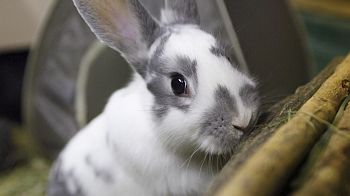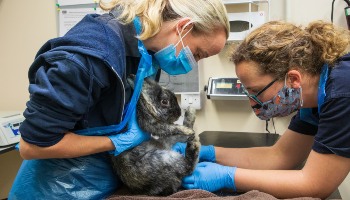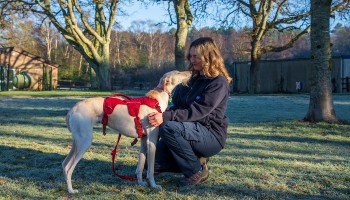- Find a Pet
- Advice and Welfare
- Ways to Give
- Get Involved
- What We Do
- Search
- My RSPCA
- Report a concern
- Sponsor
-
Colour modeVivid Calm
- Home
- Advice and welfare
- Pets
- Rabbits
- Behaviour
- Understanding rabbit behaviour
What does my rabbit's behaviour mean?
A rabbit's body language can be subtle, so it's not always easy to understand how a rabbit is feeling. Use this guide to help you recognise important body language signals. If you're concerned about your rabbit's behaviour, speak to a vet first. They may be able to advise or refer you to an animal behaviourist.
Understanding your rabbit's feelings
A good place to start is to look at your rabbit's ears. If they're close together, facing upwards and pointing outwards, your rabbit is likely to be relaxed and happy. If they're worried, their ears will be flattened against their back. You can also look at your rabbit's eyes and body posture, as well as their behaviour – for example, a rabbit may be anxious if they're hiding.
Is my rabbit happy?
These rabbits are relaxed and happy, with ears close together, facing slightly backwards and pointing outwards. Their eyes may be partly closed.
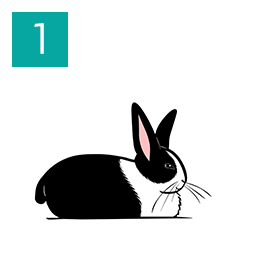
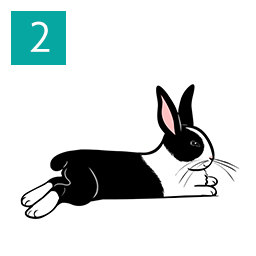
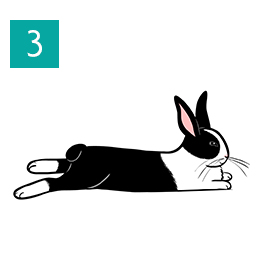
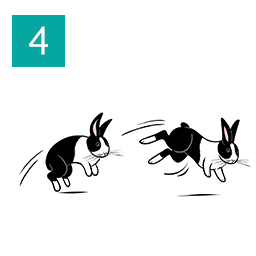
- This rabbit is lying down, with a relaxed body posture and their legs tucked under their body.
- This rabbit is lying down, with their front paws pointing forward and rear legs stuck out sideways. Their body is relaxed and extended.
- This rabbit is lying down with a fully extended, relaxed body. Their back legs are stretched out behind the body and their front paws are pointing forward.
- A happy rabbit jumps into the air with all four paws off the ground and twists in mid-air before landing. This is called 'binkying' and is a sign that the rabbit is happy or excited.
Is my rabbit worried?
These rabbits are telling you they’re uncomfortable and don't want you near them.
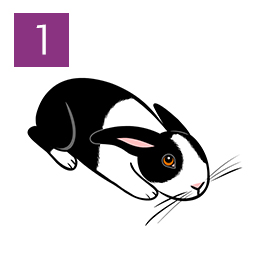
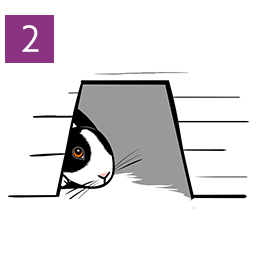
- This rabbit is in a crouched position. Their muscles are tense, their head held flat to the ground, ears wide apart and flattened against their back. Their pupils are dilated.
-
Rabbits who are worried or anxious may hide.
Is my rabbit angry or very unhappy?
These rabbits are not happy and want you to stay away or go away.
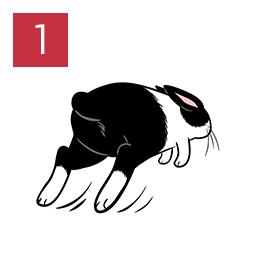
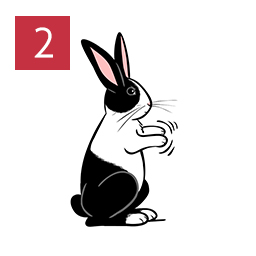

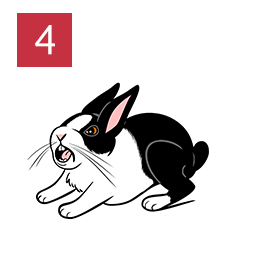
- This rabbit turns and moves away, flicking their back feet. Their ears may be held against their back.
- This rabbit is sitting up on their back legs with front paws raised, displaying boxing behaviour. It makes them look larger and more threatending. Their ears are pointed upwards and facing outwards. The rabbit may be growling.
- This rabbit is standing tense, with their back legs thumping on the ground. Their tail is raised and their ears are pointing upwards and slightly turned outwards. Their facial muscles are tense and their pupils dilated.
-
This rabbit is standing tense with their body down and their weight towards the back. Their head is tilted upwards, their mouth is open and teeth visible. Their ears are held back and lowered, their tail is raised and their pupils are dilated.
Image credits: [Lili Chin]

